How To Grow Snapdragons In Pots
Learn how to grow snapdragons in pots with these easy tips.
Snapdragons are an iconic flower that have vibrant color and personality. They are a classic for cottage style gardening, can tolerate light frost, and come in a wide variety of colors.
Snapdragons bring a lot of joy and character to a flower garden. When you press gently on the flower’s face, the mouth of the snapdragon opens, reminiscent of the snout of a dragon. Snap snap!
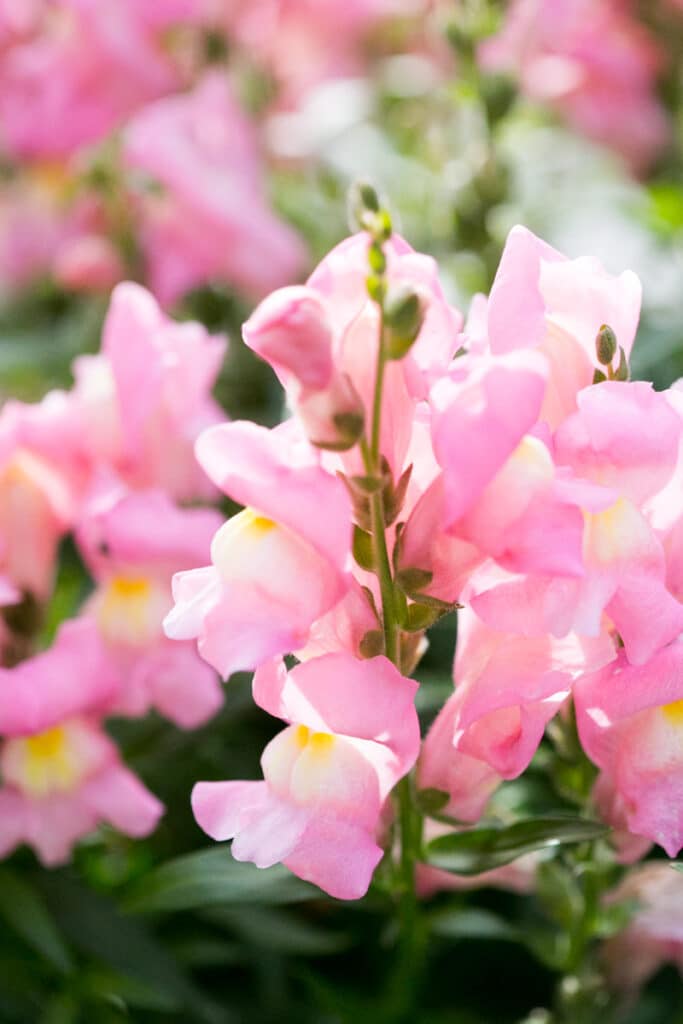
The Scientific name for snapdragons is Antirrhinum Majus. They are also referred to as garden snapdragons. This species is easy to grow, can tolerate some shade, and make wonderful cut flowers.
Snapdragons are also short-lived perennials in moderate climates, meaning that you can get a couple of blooming seasons out of each plant.
The beautiful flower spikes come in a wide range of colors and kids enjoy the snapping motion of the flower “jaws”. Because the flowers are tubular in shape, they are an excellent flower for pollinators.
To grow snapdragons in a container: choose the right kind of snapdragon variety, plant in the appropriate sized container, and give your flower the right soil, sun and water.
We’ll break each step down for you so you can have playful, cheerful snapdragons growing on your back patio this spring!
Are snapdragons perennials or annuals? Get our full article here!

This post contains affiliate links. If you click through a link and make a purchase, we may make a small commission at no extra cost to you.
But First… Are Snapdragons Good Container Plants?
Yes, snapdragons are a good choice for pots and containers. They thrive in zones 3 to 11 and bloom from spring until fall. In fact, if all you have is a porch or patio to grow flowers on, we’d recommend snapdragons be included as one of your top flower choices.
They grow well in partial shade and enjoy cooler temperatures in spring and fall.
Snapdragons have shallow roots and are low maintenance, making them very easy to grow in pots, containers and raised beds. Dwarf varieties are especially suited for patio containers.
Snapdragons prefer to bloom in moderate daytime temperatures, mid 60’s to 70s, so growing them in pots means you can move them out of the hot summer flames if desired.
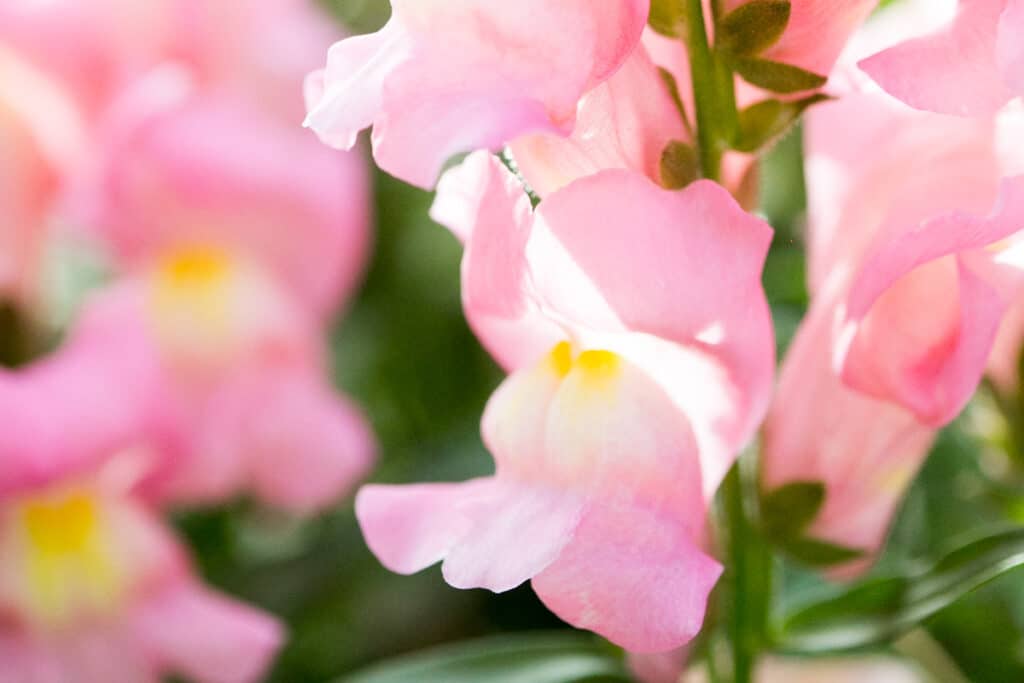
If you are new to flower gardening, read our beginner’s guide here!
Types Of Snapdragons To Grow
Before you start sowing seeds or buying snapdragon plants, you’ll want to consider what type of snapdragon you should grow. There are many varieties available, and not all are best suited for container gardening.
When growing snapdragons in containers, consider the growing height of the snapdragons.
There are three different heights available: dwarf, medium and tall. Dwarf snapdragons grow just 6 to 15 inches tall and have a bushy, low growing habit. Mid sized varieties grow 20 to 30 inches inches in height, and tall varieties grow up to 48 inches.
Trailing snapdragon varieties are also available.
We recommend dwarf, trailing, and mid height snapdragon varieties for container growing. Taller snapdragon varieties can grow well in raised beds, but they are too large for containers and will cause a pot to be top heavy and possibly tip or fall. Dwarf varieties are small enough thrive in pots and containers.
Taller varieties of snapdragons, such as the Rocket Mix, make excellent cut flowers…. just make sure to grow them in a raised bed or straight into the ground!
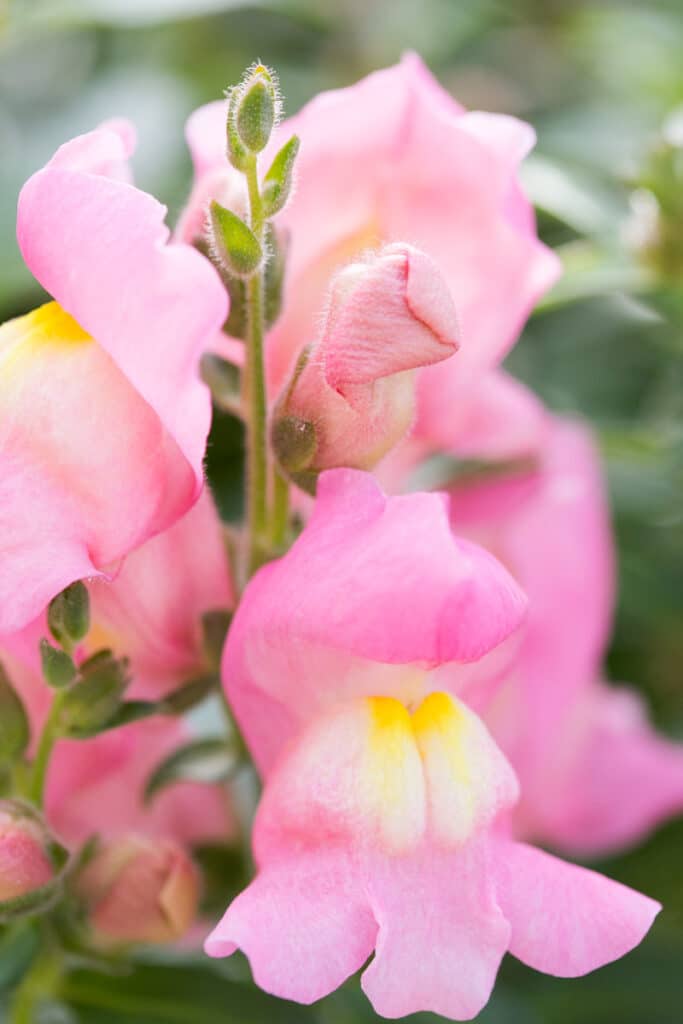
Read about the best annuals for full sun here.
Growing From Seed Or Buying Starts
When growing snapdragons, you have two options: you can grow from seeds or buy established plants from a nursery.
The benefit of growing your own snapdragons from seed is that you are able to grow many plants for a fraction of the cost of buying snapdragon starts at a nursery. However, more work is required to grow snapdragons from seeds.
Tips For Purchasing Snapdragon Starts
When purchasing young plants for containers, look for dwarf and mid height varieties. The plants should look strong and healthy. Be careful when transporting snapdragons home as the long stems are prone to breaking. Snapdragon plants will be available in early spring from nurseries and big box stores.
How To Start Snapdragons From Seed
To grow snapdragons from seed, you will need a seed tray, growing lamp and seeds.
Start snapdragon seeds 6 to 8 weeks before the final frost. Snapdragon seeds are very tiny and require light to grow. Light is required for germination! This means you don’t actually bury them in the soil, but set them on top and mist to water.
To grow snapdragons from seed, purchase a seed growing tray. You will fill this with a good growing medium such as vermiculite and soak the tray several times to saturate the soil with water.
Sprinkle the seeds over the top of the growing medium and water by spritzing lightly with a spray bottle. The seeds need light to germinate, so put them in a sunny windowsill or use a grow light such as this one. Make sure your snapdragon seedlings receive at least 8 hours of light a day.
Seedlings should sprout within two weeks time. Once they do, you can slowly introduce them to the colder outdoor life by setting them outside for a few hours per day. Incrementally add more outdoor time each day by an hour and in a week the snapdragons you started form seed are ready to live outdoors.
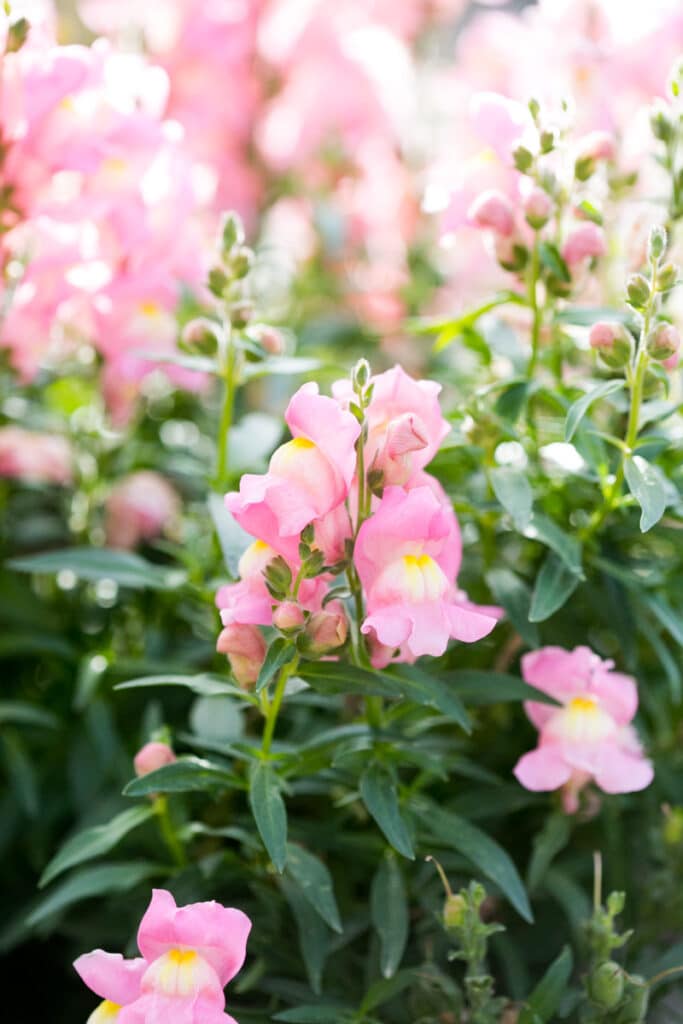
Choosing Your Container
Once you are ready to plant your snapdragons, consider the size, drainage and container type.
For one dwarf snapdragon plant, a container that is ten inches deep will suffice. For mid sized snapdragons, use larger patio containers to accommodate their taller growing habit.
Any material will work well for growing snapdragons: terra cotta, plastic, wood, or even cement.
We love using terra cotta because this type of clay based container is porous and allows water and air to flow easily in and out, which is healthy for the root system. But, any kind of container will work as long as it has drainage.
If your container does not have built in drainage, drill holes in the bottom so that water can flow out.
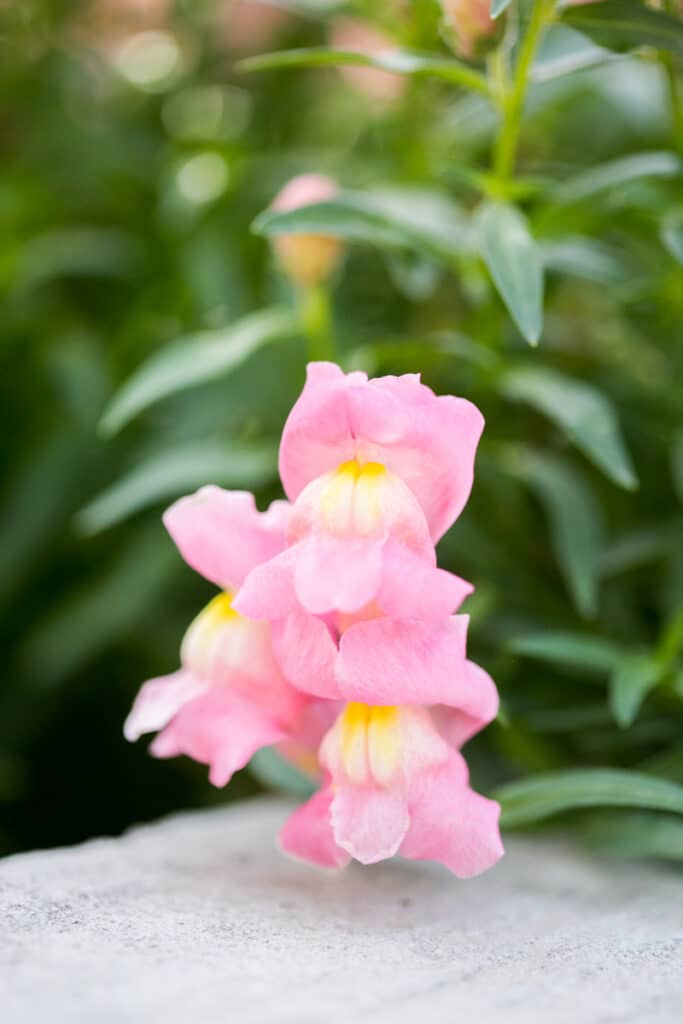
Soil
Snapdragons crave fertile soils that are well draining with a neutral pH. When planting snapdragons in a pot, make sure to use potting soil, not gardening soil or soil from your backyard.
Potting soil is crafted with the goal of being loose and well draining, which is important in container gardening. If you use soil meant for garden beds or pulled from your yard, it will compact and the snapdragon will be starved for water and nutrients.
You can find potting soil at most nurseries and big box stores, or purchase on Amazon. Miracle Gro brands like this one work just fine.
Snapdragons are not heavy feeders, but they appreciate a nutrient rich soil to grow in!
Pinch out the center of a snapdragon flower when it is a few inches tall. This will encourage the plant to bush out, creating a bushier, fuller plant!

How To Plant Snapdragon In Pots
Once you have your soil and container chosen, there are a few key steps to planting your snapdragons. First, check your last frost date to make sure all danger of frost has passed. Although snapdragons can tolerate cold temperatures, you want to give your baby flowers the best chance of survival.
Fill your container up until 2 to 3 inches remain from the top of the pot. Then, take your snapdragon start and gently loosen the root ball with your fingers. Place the snapdragon in the pot and cover the roots with soil to the crown of the plant.
If you are looking for a unique container that has style and class, check out my friend Julie’s post on recycling vintage dishes into planters. Her planter ideas are irresistibly charming!
Never plant your snapdragon all the way at the top of the container. Leave at least a half inch from the top of the pot to protect the plant base.
Deeply water your snapdragon at the base of the plant once it’s in the pot to help it adjust to it’s new home.
Keep the snapdragon pot in a sheltered spot away from wind to protect the stems and keep the plant healthy.

Sunlight
Snapdragons can handle part shade, but these iconic beauties really do love light… and lots of it! Try to find a sunny location t that gets to 6 to 8 hours of sunlight, but that is also protected from brutal and intense heat.
What do we mean by that? Harsh afternoon heat and heat reflected off a building in the later hours of the day can be a little too much for snapdragons (and many other flowers) to handle. An ideal location would be a spot that gets morning to mid afternoon full sun and late afternoon shade.
Keep in mind that snapdragons thrive in moderate temperatures. If you live in a hot climate, you can help your snapdragon thrive by giving it more shade. Think morning sun and afternoon shade.
Luckily, snapdragons are very hardy, so if you notice them starting to wilt, move your container, water well, and they will likely survive.
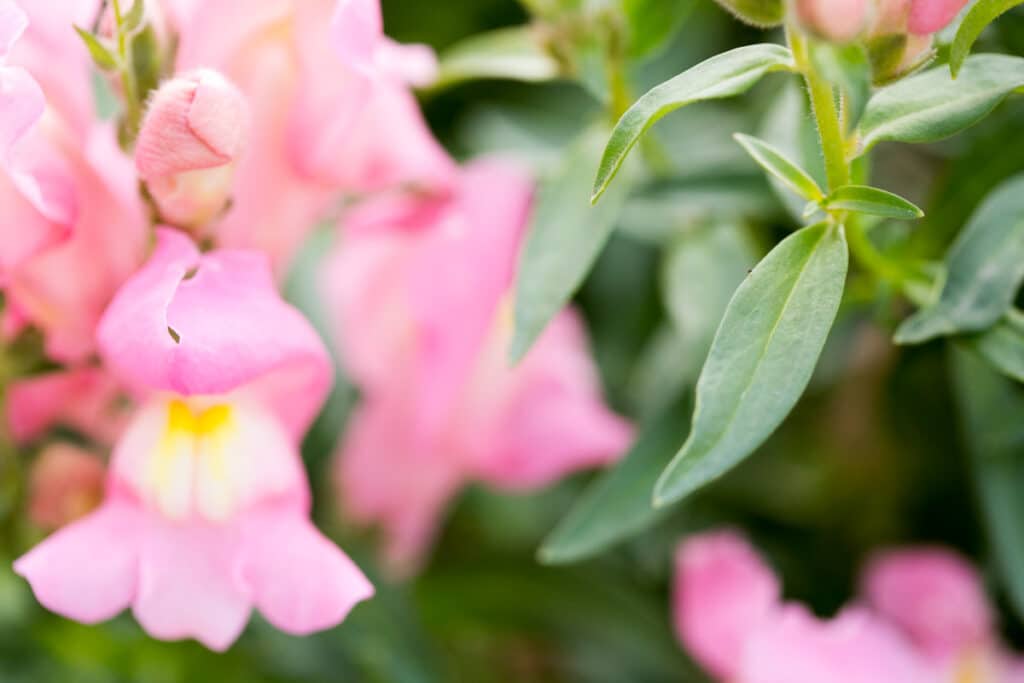
Water
Snapdragons grown in pots will require more frequent watering then flower grown in the ground. Keep a keen eye on your pots and water when the top inch of the soil is dry.
It is best practice to water at the base of the plant to protect the stems and keep the plant healthy. This will help prevent many diseases such as powdery mildew.
To avoid root rot, don’t over water or drown your snapdragons. Make sure to wait until the soil dries out to water, and avoid keeping the soil constantly damp.
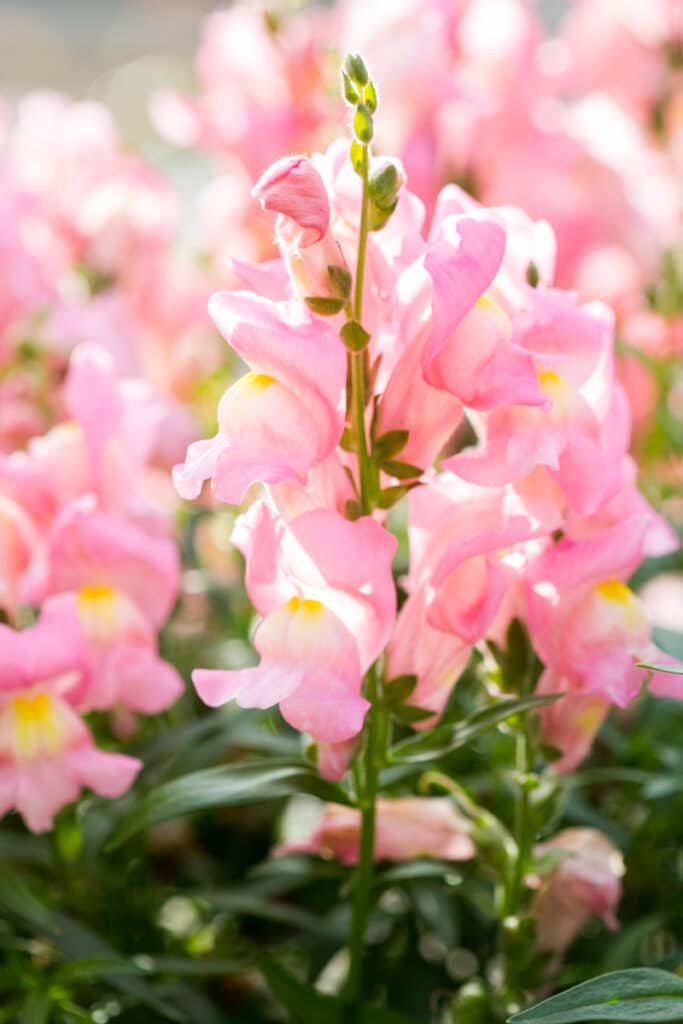
Growing Season
Snapdragons typically bloom in the spring, then blooming slows down in mid summer during the hottest temperatures.
As the temperature cools in the fall you will be rewarded with another rush of beautiful snapdragon blooms that will last well into mid to late fall, depending on your zone.
Deadheading snapdragons regularly will encourage them to bloom more frequently.
How To Deadhead Snapdragons In Pots
Snapdragons are a unique flower in that they bloom from the top down. Regularly deadheading spent flowers will encourage new blooms.
Keep an eye out for spent blooms and once all flowers have blossomed, prune that stalk with a clean, sharp pair of clippers.
Clip off your spent snapdragon stalk at the bottom of the stalk below the last bloom but above the first sets of leaves. Make sure not to clip off any new buds that have already started to grow!
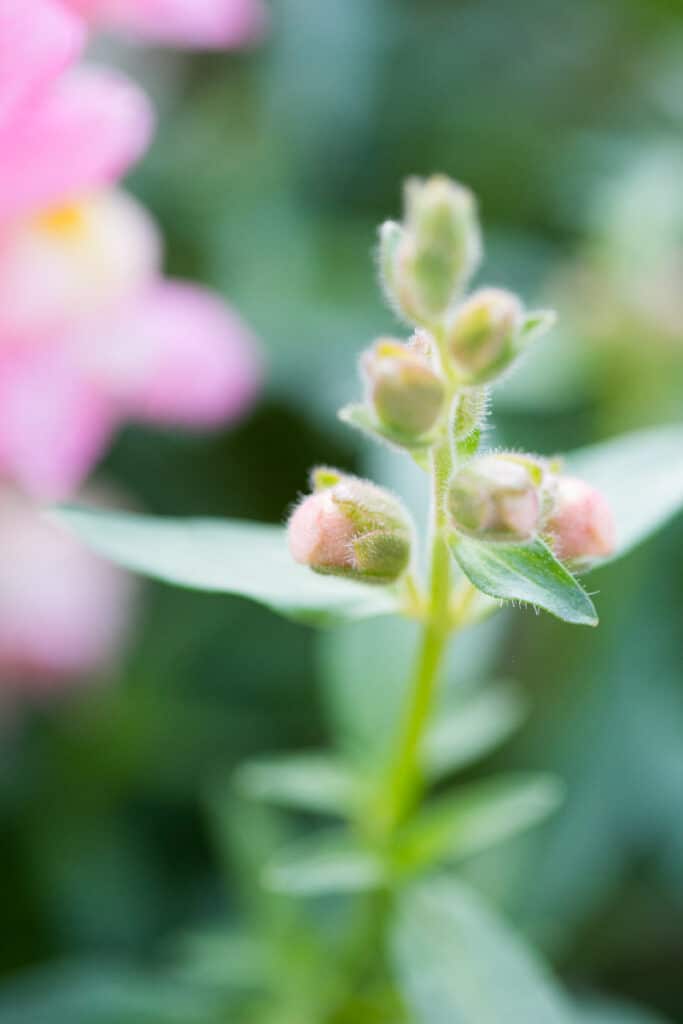
Snapdragon Care
To care for your snapdragon plants, check soil regularly and water plants as needed. Keep an extra eye on them during hot spells.
You can give them a shot of all purpose fertilizer for flowers a couple of times per season, such as Bloom Booster. Be sure to check regularly for spent blooms and deadhead. During very hot weather, move your plants into a shaded area.
Since snapdragon are tender perennials, you can winter over your pots in a dry, warm area such as a garage, and they will come back the following year.
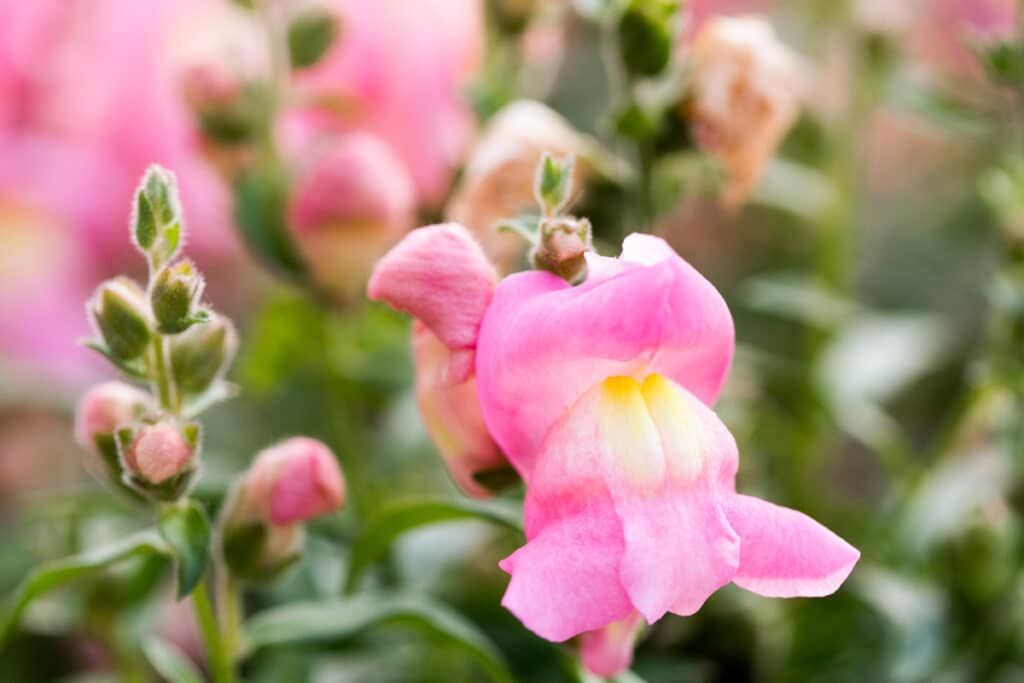
Types Of Snapdragons For Pots
Some of the best dwarf varieties of snapdragons for pots are Floral Showers, Madame Butterfly, Candy Top White, Rose or Yellow and Snappy Rose.
Diseases
Fungal diseases such as powdery mildew and downy mildew can plague snapdragons. Ensuring that each plant has good airflow and is watered at the base of the plant can help prevent these ailments.
Avoid watering overhead! Keeping leaves dry is an essential part of preventing disease.
Snapdragon rust can also plague the leaves of snapdragons with dark brown spots. Immediately remove infected leaves and dispose of them far away from other plants.

Conclusion
Snapdragons truly are a unique, sassy and wonderful addition to a flower garden. And whether you have a small patio space or a sprawling backyard, you can find a spot for snaps to thrive.

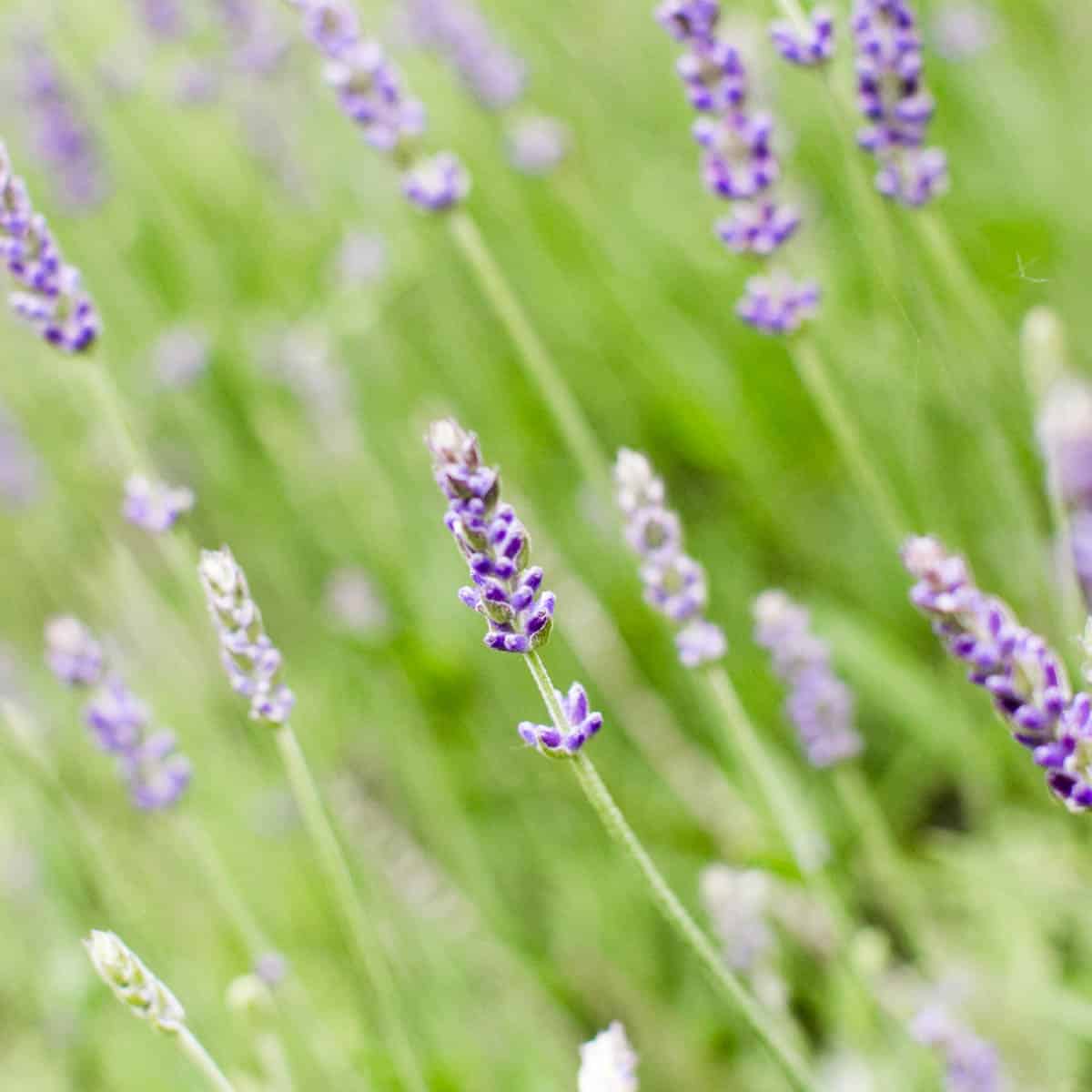

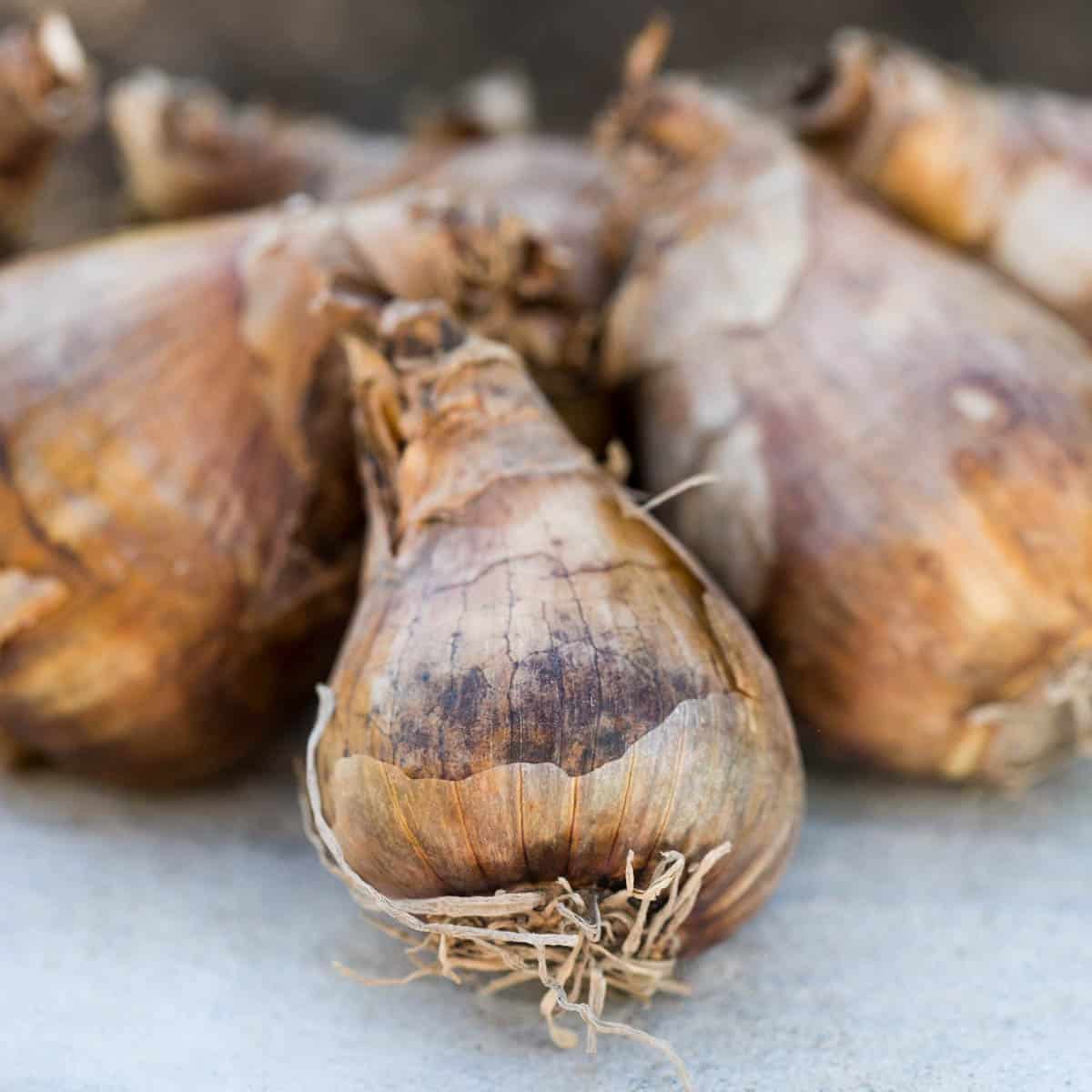

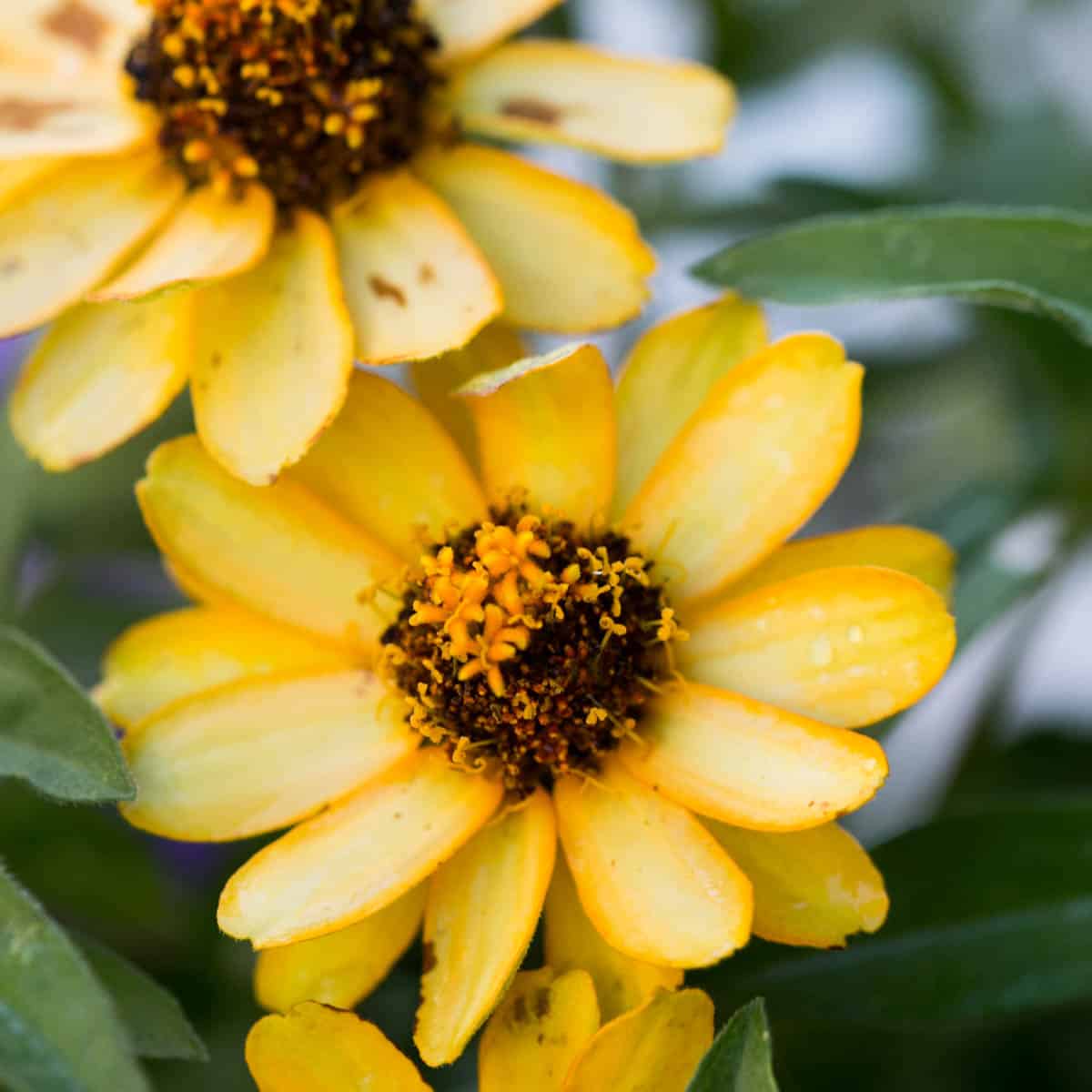

Such beautiful flowers, thank you for sharing these useful tips! 🙂
Thanks, always looking for new ways to bring life to our property and continuously find out that things are a bit more complicated than we first think, so I’m glad to have some more knowledge under my belt